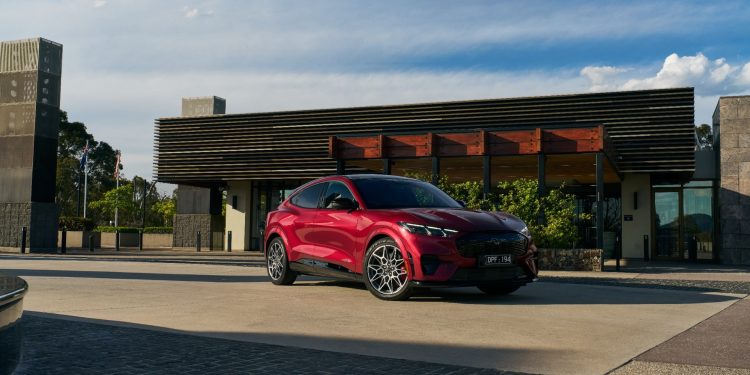First drive: Ford Mustang Mach-E gains efficiency, polish and real performance bite
Words NZ Richard Edwards | Images Ford
The Ford Mustang Mach-E has had an unusual run in New Zealand. Strong early sales were followed by a run-out period helped along by clean-car-discount timing and extended test-drive promotions that cleared remaining stock. For a time there simply were none left to buy.
Now it returns with the most meaningful update since launch. The 2025 refresh brings a tightened local model range, new motors for both variants, efficiency gains from a revised heat-pump thermal system, and a significant performance lift for the GT. It may look familiar, but underneath it is a more complete package than before.

Two models come to New Zealand: the rear-wheel-drive Select at $74,990 plus on-road costs, and the all-wheel-drive GT at $116,990 plus on-road costs. Australia also receives a mid-range Premium model with a large NCM battery and extended range, but that version is not being offered here.
Same silhouette, sharper details
Traditionalist critiques aside, it is a relatively successful translation of Mustang muscle into an EV silhouette. The proportions are still strong, the haunches still pronounced, and the triple-bar tail lamps still give it identity without drifting into parody.
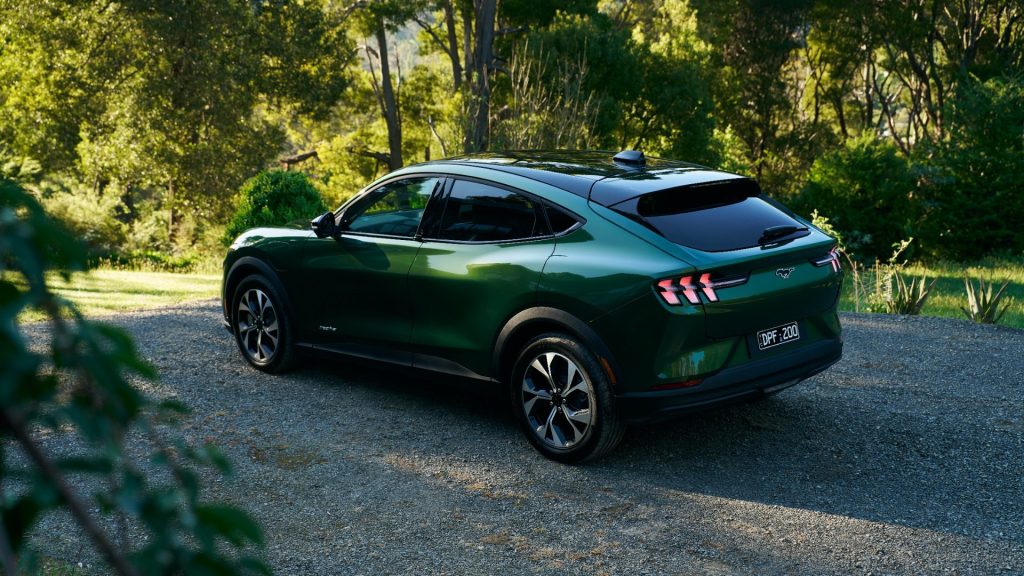
The GT gains a new grille and revised lower air intakes, and both variants adopt new glare-free LED headlights. Wheel designs are new, and the Select picks up matte-finish side sills rather than gloss black. The push-button door releases remain. So does the lack of a tow rating.
New motors, improved efficiency and revised thermal control
The biggest changes are under the floor and in the driveline. The Select now uses a 73 kWh usable LFP battery paired with a new in-house motor producing noticeably more urge than before. WLTP range rises to 470 kilometres.
The GT retains the same 91 kWh usable NCM battery as the previous model but now feeds revised motors producing a substantial lift in output. Range also improves slightly, now rated at 515 kilometres WLTP.
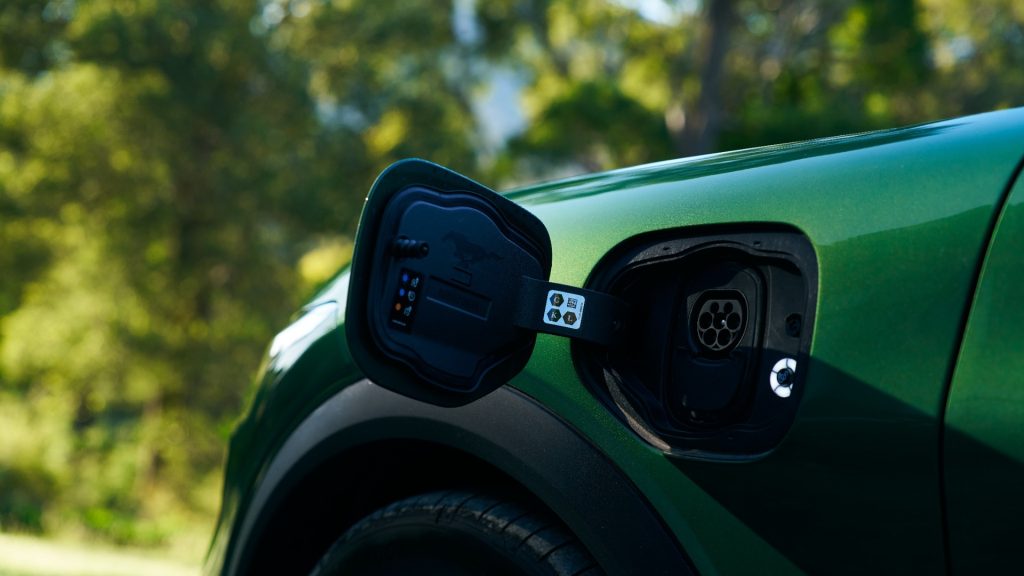
Charging specs remain at 150 kW DC and 11 kW AC, but Ford says the new heat pump and associated thermal upgrade allow the car to hold higher charging speeds for longer. In the GT the 10 to 80 per cent DC time drops from 45 minutes to 36 minutes purely through better temperature control.
Cabin tweaks improve function
The cabin layout is familiar, with the large portrait touchscreen and slim instrument panel carrying over, but several details have changed for the better. Both front seats are now 10-way power adjustable. In the GT the Ford Performance buckets are excellent and a marked improvement on the older car.
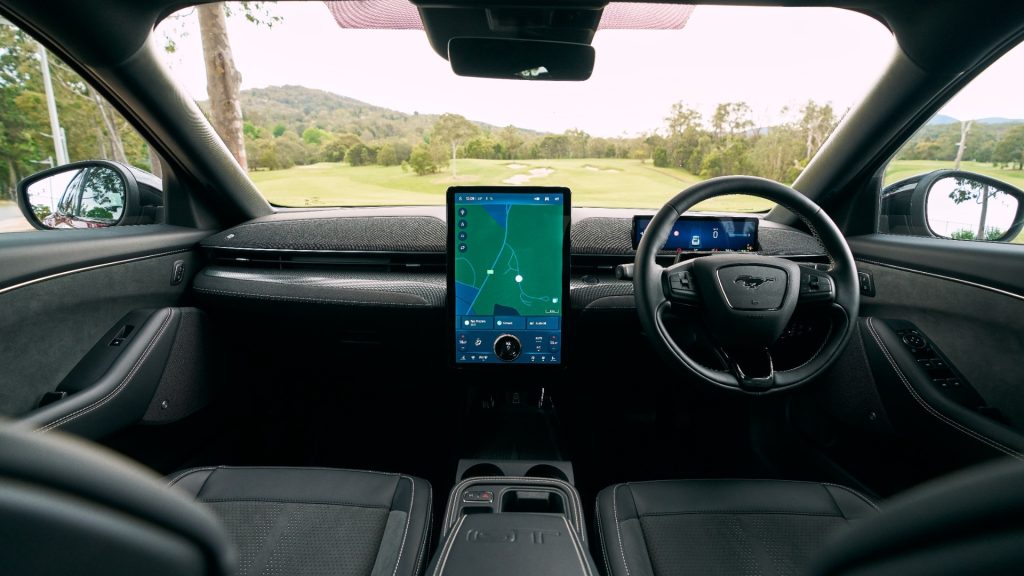
The rotary gear selector on the console has been replaced with a column-mounted shifter. This frees up a much larger central storage tray, which now houses additional USB-A ports, a 12-volt outlet and more meaningful cubbies, though while more practical it does look like a later addition to the party and it creaks when your leg leans on it.
Material quality remains strong, especially in the GT with its Alcantara-trimmed surfaces and panoramic glass roof.
On the road: Select finds its groove
The Select is a balanced, well-mannered introduction to the line-up. Power delivery is strong enough to chirp the tyres away from lights and the new motor feels smooth, flexible and more responsive than the previous generation.
The chassis is a highlight. With fixed dampers the ride is impressively supple yet controlled, and the steering is precise without feeling artificial. It is one of the more natural-feeling rear-drive EVs at this price point.
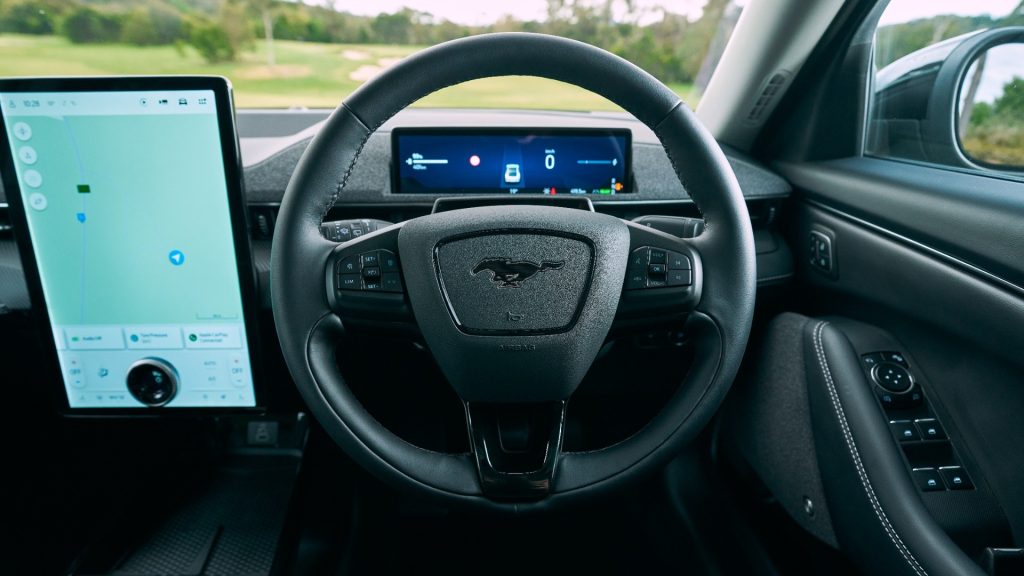
Not everything is perfect. The Select’s seats sit a touch high and feel more on than in, and some trim creaks emerged around the new console. But cabin noise is low, the big screen remains intuitive, and day-to-day refinement is very good.
Efficiency is hard to judge on a launch program, but the numbers shown on our car suggest the Select will come close to its claimed range in normal use, supported by the heat pump and revised motor.
The GT: a very different beast
Moving from Select to GT changes the character completely. The GT is genuinely fast, the kind of fast that feels more like a performance wagon than a high-riding electric SUV. Even with all-wheel drive there is wheelspin off the line, especially in the most aggressive drive modes, but it gathers momentum with real conviction.
The MagneRide dampers give the GT a broad spread of ability. In the relaxed settings it is compliant and controlled. In Untamed it stiffens significantly and the car takes on a rear-biased, far more purposeful character that invites a more committed driving style.
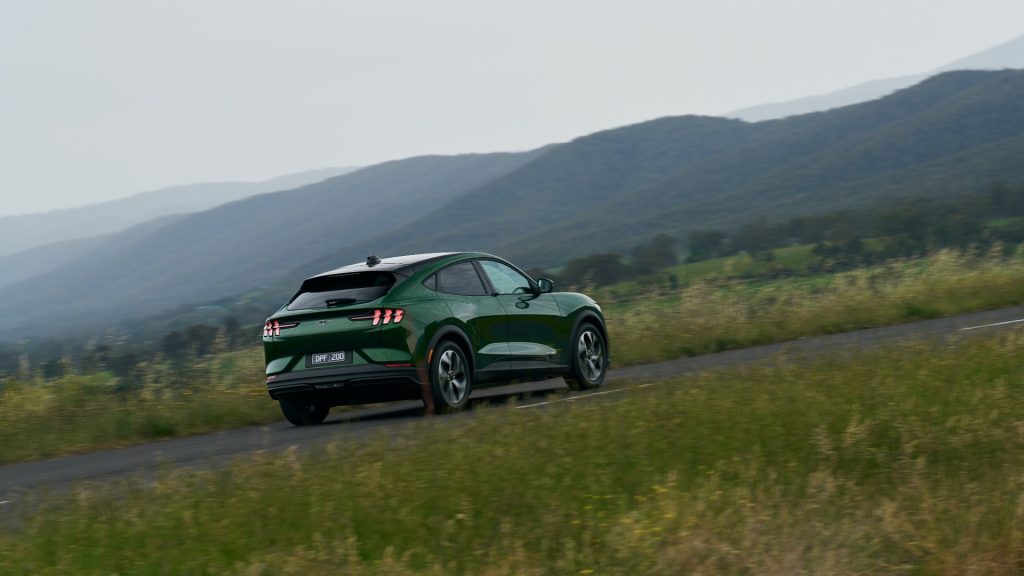
The brakes, backed by large Brembo hardware, are strong and consistent. Steering weight increases in the sportier modes but remains accurate and natural.
On a sealed airfield the GT repeatedly delivered sub-four second 0 to 100 km per hour runs and tracked straight even on a loose surface. It is not delicate but it is effective. The performance uplift over the previous GT is clear.
Driver assistance and refinement
Ford’s driver assistance suite remains one of the more mature offerings. Adaptive cruise, lane centring, blind-spot monitoring and cross-traffic alert all work with minimal intervention and no unnecessary noise. Nothing feels abrupt.
Cabin insulation is good and the GT’s seat upgrade makes a significant difference. Tech integration, including wireless phone projection and a simple physical volume dial, remains one of the more user-friendly setups in this segment.

Verdict: a much stronger Mach-E
The 2025 Mustang Mach-E is a meaningful evolution of the original. The Select is now a more compelling daily driver with improved efficiency and better ride quality, while the GT finally feels like the fully resolved performance flagship it always hinted at being.
New Zealand misses the mid-range Premium version, but the two-model line-up works. The Select offers strong value and real-world range, and the GT adds genuine performance capability and refinement. For returning buyers and newcomers alike, this is easily the strongest Mach-E yet.


